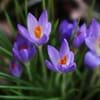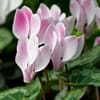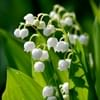Life Span
Perennial
Perennial
Type
Bulb, Flowering Plants
Tree
Origin
Aegean Islands, Central Asia, Middle East, North Africa, Southern Europe, Western China
Africa, South-Eastern Asia
Types
Crocus abantensis, Crocus adanensis, Crocus biflorus, Crocus chrysanthus, Crocus korolkowii
Not Available
Number of Varieties
Not Available
Habitat
Scrubs, Woods
Subtropical forests, Tropical regions
USDA Hardiness Zone
3-8
5-9
Sunset Zone
1a, 1b, 2a, 2b, 3a, 3b, 4, 5, 6, 7, 8, 9, 10, 11, 12, 13, 14, 15, 16, 17, 18, 19, 20, 21, 22, 23, 24
1a, 1b, 2a, 2b, 3a, 3b, 7, 8, 9, 10, 11, 14, 18, 19, 20, 21
Habit
Clump-Forming
Clump-Forming
Minimum Height
Not Available
Flower Color
Blue, Orange, Pink, Purple, White, Yellow
Pale Yellow, Yellow green
Flower Color Modifier
Not Available
Bicolor
Fruit Color
Not Available
Green, Light Green
Leaf Color in Spring
Green
Green
Leaf Color in Summer
Not Available
Light Green
Leaf Color in Fall
Green
Green, Light Green
Leaf Color in Winter
Green
Brown, Light Yellow, Tan
Leaf Shape
Grass like
Oval
Plant Season
Spring, Winter
Summer, Fall, Winter
Sunlight
Full Sun, Part sun
Full Sun
Growth Rate
Medium
Medium
Type of Soil
Loamy
Clay, Loam, Sand
The pH of Soil
Neutral, Slightly Acidic
Acidic, Neutral, Alkaline
Soil Drainage
Well drained
Average
Bloom Time
Spring, Winter
Summer, Late Summer, Early Fall
Tolerances
Drought
Pollution, Drought, Salt
Where to Plant?
Container, Ground, Pot
Ground
How to Plant?
From bulbs, Grafting, Seedlings
Seedlings, Stem Cutting
Plant Maintenance
Medium
Medium
Watering Requirements
Form a Soil ring to water efficiently, Water Deeply, Water twice a day in the initial period, Water when soil is dry
Needs less watering
In Summer
Lots of watering
Lots of watering
In Spring
Moderate
Moderate
In Winter
Average Water
Average Water
Soil pH
Neutral, Slightly Acidic
Acidic, Neutral, Alkaline
Soil Type
Loamy
Clay, Loam, Sand
Soil Drainage Capacity
Well drained
Average
Sun Exposure
Full Sun, Part sun
Full Sun
Pruning
No pruning needed in the early stages, Prune to stimulate growth, Remove dead or diseased plant parts, Requires little pruning
A hard prune may be necessary if the plant becomes woody, Cut upper 1/3 section when young to enhancegrowth, Remove damaged leaves, Remove dead branches, Remove dead leaves
Fertilizers
All-Purpose Liquid Fertilizer
10-10-10 diluted liquid fertilizer, All-Purpose Liquid Fertilizer, Compost
Pests and Diseases
Aphids, Botrytis Blight, Mushroom root rot, Narcissus Basal Rot, Narcissus Bulb Fly, Slugs, Snails, Tulip Fire, Tulip Viruses
Aphids, Downy mildew, Purple Blotch, Red blotch
Plant Tolerance
Drought
Drought, Salt and Soil Compaction, Shade areas
Flower Petal Number
Single
Single
Foliage Texture
Fine
Fine
Foliage Sheen
Glossy
Glossy
Attracts
Not Available
Bees, Flies, pollinators
Allergy
Not Available
conjunctivitis, sneezing
Aesthetic Uses
Not Available
Not Available
Beauty Benefits
Not Available
Making cosmetics, Not Available
Environmental Uses
Air purification
Air purification, Shadow Tree, Soil protection
Medicinal Uses
Arthritis, Gout
Cardiovascular problems, Detoxifies lever, Diabetes, Dysentry, Jaundice, Menstrual Disorders
Part of Plant Used
Whole plant
Inner Bark, Leaf Stalks
Other Uses
Not Available
Can be made into a herbal tea, Oil is used for aromatherapy, Used as a fodder tree in agricultural areas
Used As Indoor Plant
No
No
Used As Outdoor Plant
Yes
Yes
Garden Design
Not Available
Dried Flower/Everlasting, Lawns and Turf, Mixed Border, Wildflower
Botanical Name
Crocus Longiflorus
Terminalia arjuna
Common Name
Crocus
Arjuna
In Hindi
Crocus
अर्जुन वृक्ष
In German
Krokus
Terminalia arjuna
In French
Crocus
Terminalia arjuna
In Spanish
Azafrán
Migdałecznik arjuna
In Portuguese
Açafrão
Migdałecznik arjuna
In Polish
Krokus
Migdałecznik arjuna
Phylum
Magnoliophyta
Magnoliophyta
Class
Liliopsida
Not Available
Order
Asparagales
Myrtales
Clade
Angiosperms, Monocots
Angiosperms, Eudicots, Rosids
Tribe
Not Available
Not Available
Subfamily
Crocoideae
Not Available
Importance of Crocus and Arjuna Tree
Want to have the most appropriate plant for your garden? You might want to know the importance of Crocus and Arjuna Tree. Basically, these two plants vary in many aspects. Compare Crocus and Arjuna Tree as they differ in many characteristics such as their life, care, benefits, facts, etc. Every gardener must at least have the slightest clue about the plants he wants to plant in his garden. Compare their benefits, which differ in many ways like facts and uses. The medicinal use of Crocus is Arthritis and Gout whereas of Arjuna Tree is Cardiovascular problems, Detoxifies lever, Diabetes, Dysentry, Jaundice and Menstrual Disorders. Crocus has beauty benefits as follows: Not Available while Arjuna Tree has beauty benefits as follows: Not Available.
Compare Facts of Crocus vs Arjuna Tree
How to choose the best garden plant for your garden depending upon its facts? Here garden plant comparison will help you to solve this query. Compare the facts of Crocus vs Arjuna Tree and know which one to choose. As garden plants have benefits and other uses, allergy is also a major drawback of plants for some people. Allergic reactions of Crocus are Not Available whereas of Arjuna Tree have conjunctivitis and sneezing respectively. Having a fruit bearing plant in your garden can be a plus point of your garden. Crocus has no showy fruits and Arjuna Tree has showy fruits. Also Crocus is flowering and Arjuna Tree is not flowering . You can compare Crocus and Arjuna Tree facts and facts of other plants too.





